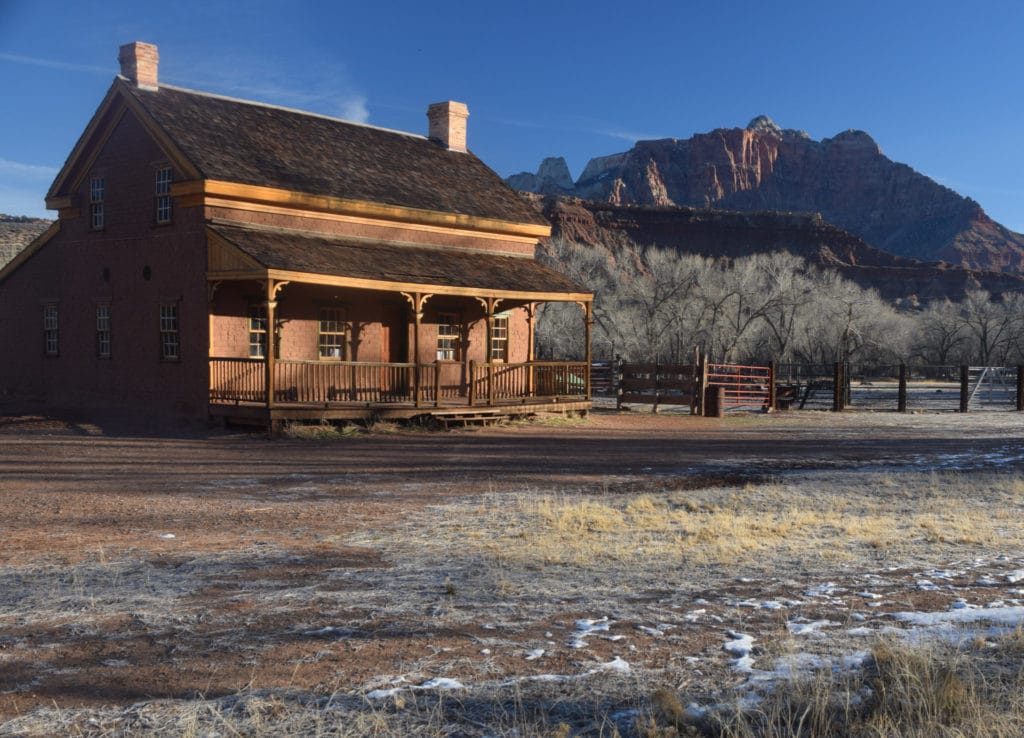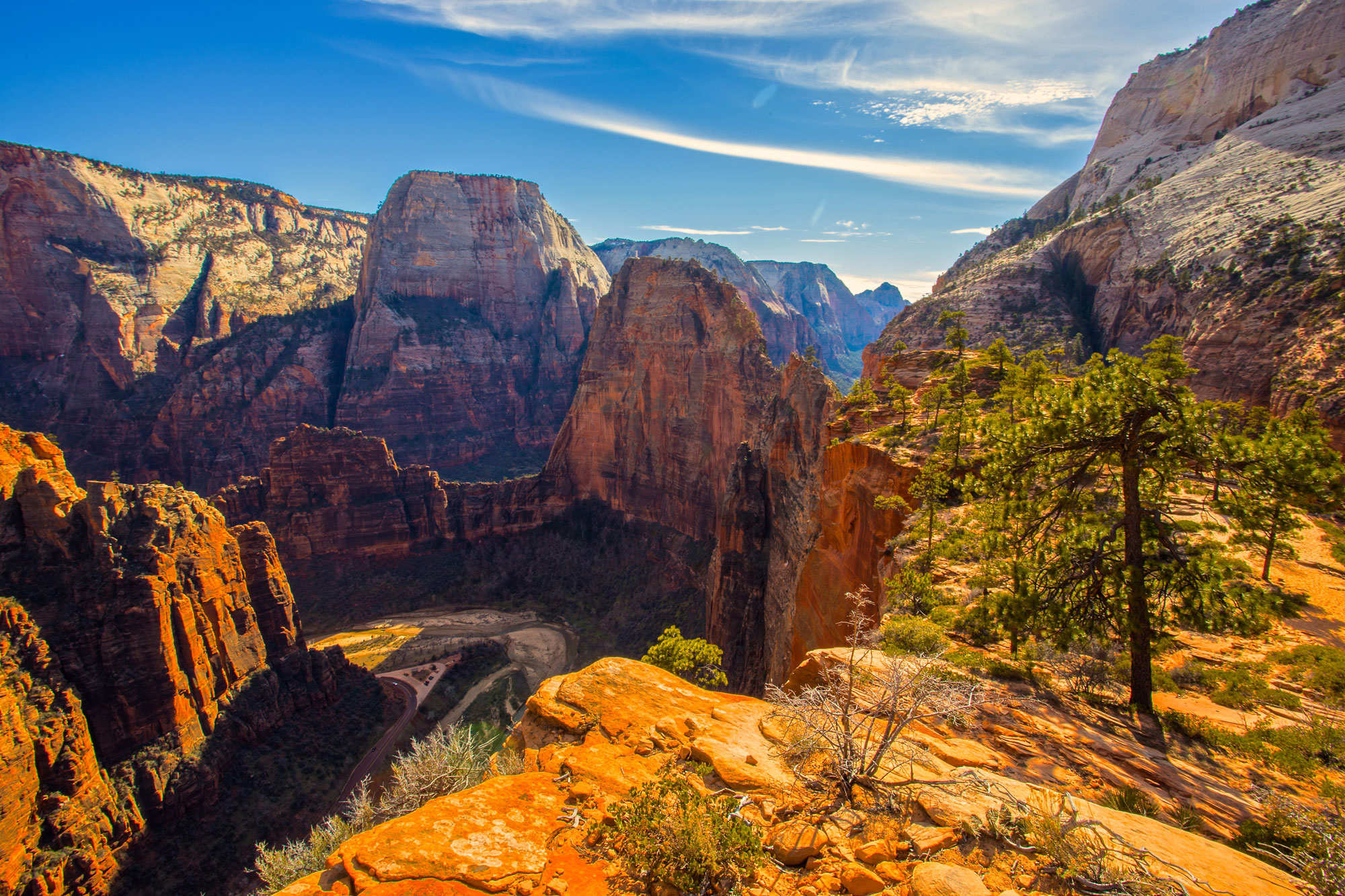FEATURED PHOTO: Zion Canyon from the Angels Landing Trail. Source: Utah.com
Road Trips with Tom begins its third year by returning to the epic landscape of the American Southwest for more posts focusing on Utah’s five stunning national parks. This week, we’ll visit Zion National Park. Then, on January 15, we’ll mosey over to Bryce Canyon National Park, followed on January 29 by Capitol Reef.
This is a change from my original plan, which was to include Zion and Bryce together in this post. When I finished, I’d written 1,800 words, which is more than you want to read at one time. So each of the five parks will get its own post.
While all five parks are colorful fantasylands of eroded stone, each is unique. Each is breathtakingly beautiful. Each is worthy of being a road trip destination. And each merits its own post in this blog.
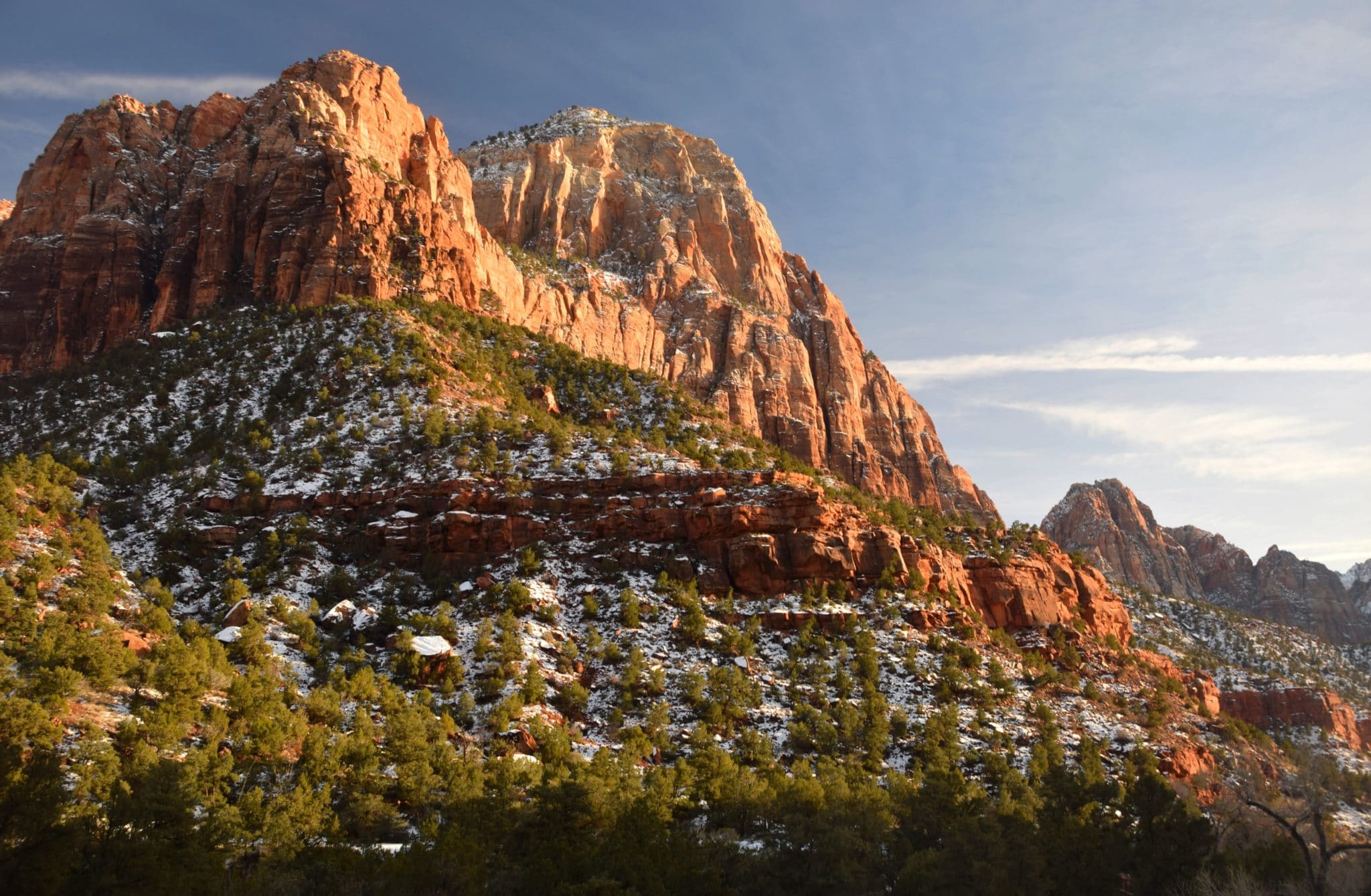
Yosemite in technicolor
We’ll start with Zion. I’ve made at least a dozen trips there over the years, mainly because it’s close enough to my home near Los Angeles to make a three-day weekend visit feasible. It’s about 7 ½ hours from L.A. and 2 ½ from Las Vegas.
To get there, the vast majority of visitors come via Interstate 15. Take Exit 16 onto SR 9 and drive about 45 minutes to the park gate. For the east entrance, take US 89 to SR 9, then turn west.
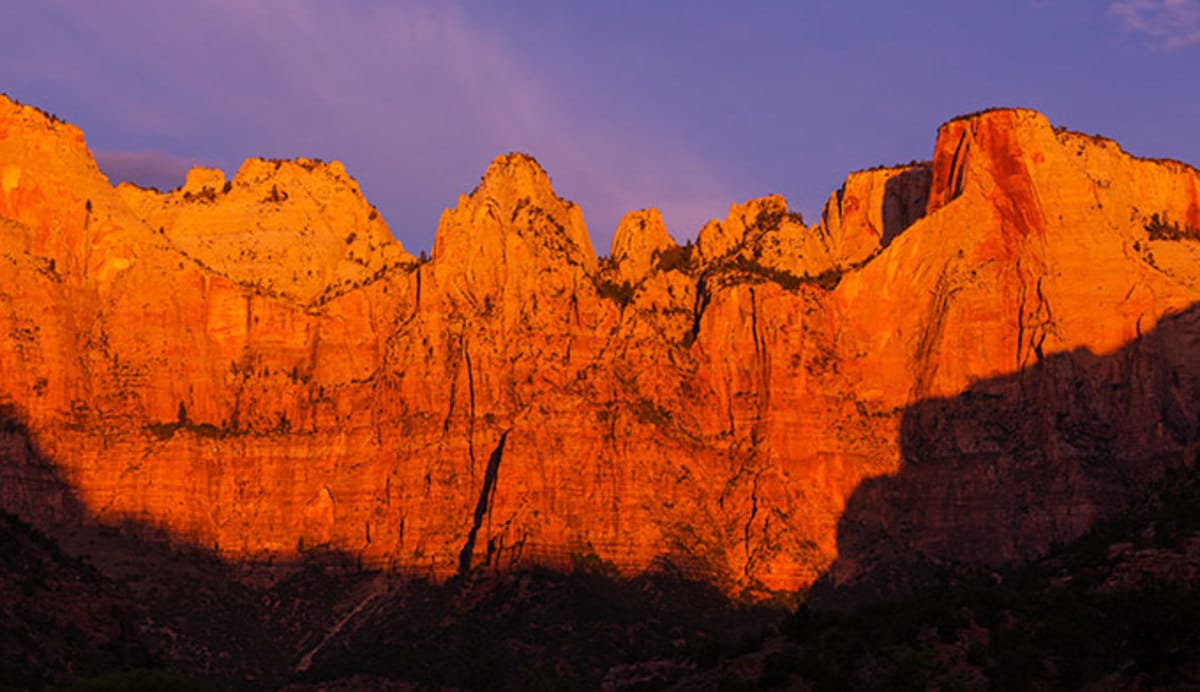
My first visit was unforgettable.
It was on a rainy April day back in the 1970s. It was my first solo road trip. My first impression was that Zion was Yosemite in technicolor. Like Yosemite, Zion is centered on a valley bordered by towering stone walls, with a rushing river winding along the valley floor. That day, waterfalls were everywhere, including many that were hundreds of feet high. From the road’s end at the Temple of Sinawava, at least half a dozen giant falls thundered down from the cliffs above.
The biggest differences: Zion Canyon is narrower, which emphasizes the verticality of the landscape. Zion’s cliffs are brilliantly colored reddish sandstone, with black stains. They’re more jagged than Yosemite’s. And the waterfalls were ephemeral, coming to life only during and just after a rainstorm, whereas Yosemite’s falls, fed by High Sierra snowmelt, run most of the year.
I was blown away in the first few minutes of my first visit, and have never lost that feeling.
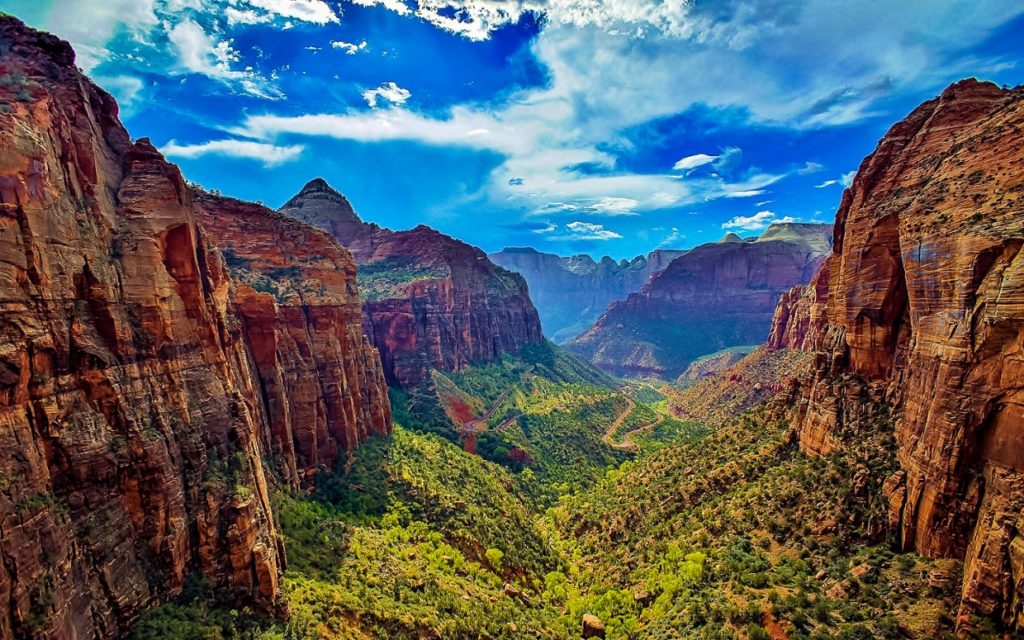
Getting started
How much you love Zion depends largely on how you plan your visit. Everyone loves the idea of Zion, and on a summer day it can seem like everyone is there, too. Visitation in 2017 was about 4.4 million, and it could hit 5 million this year. While parks like Grand Canyon and Rocky Mountains get more visitors, those visitors are well-dispersed throughout the parks. That’s not the case with Zion. Like in Yosemite, nine of ten visitors are concentrated in one small area – Zion Canyon.

With the right strategy, you can significantly elevate the quality of your visit here. The key is planning. Visitation is highest in summer, but the park is busy from early April through October. From early March through November, the scenic canyon drive is closed to private vehicles. You ride a free shuttle that stops at nine locations that are convenient to all trailheads and attractions. Another shuttle runs from the adjacent town of Springdale to the visitor center.
Bicycles are permitted in the canyon, and a bike is a great way to sightsee. The road is level, but it’s a tad narrow. Bikes can be rented at Zion Lodge mid-March through October.
Unless you plan to visit Zion in winter (other than at Christmastime), you’ll need to plan well in advance.
Make your starting place the park’s excellent website – www.nps.gov/zion. On the landing page are direct links to information on the shuttle system, camping, wilderness travel and more, including traffic and travel tips. You’ll find much more on the drop-down menus on top in the page. Be sure to take five minutes to watch the well-produced visitor information video.
Mob avoidance strategy
Before I provide a link for some of the must-see stops in and near the canyon, let me offer these tips:
- Avoid summer if you can. It can get very hot in the canyon, and heat, mixed with mobs of people, doesn’t make for a quality park experience. If you must come in summer, avoid weekends, and don’t be one of the masochists who visit Zion on holiday weekends. The shuttle is extremely busy in summer, and you may have to wait an hour or more to board.
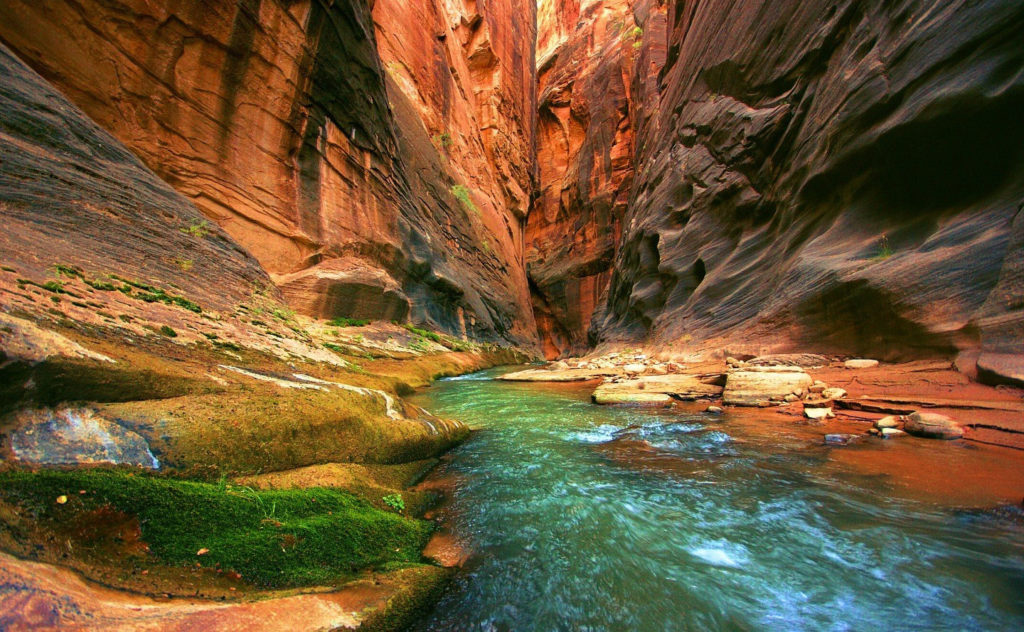
- Stay overnight in Springdale. The little town is full of places to stay, ranging from luxury properties to mom-and-pop motels. For a tourist town, it’s remarkably non-tacky! In off-season, you can stay in Hurricane or St. George, provided you heed the next tip. (My preferred hotel is the gorgeous La Quinta Inn in La Verkin.) During busy periods, you’ll need to reserve a room in Springdale weeks in advance. NOTE: Zion Lodge offers cabins and hotel rooms in the canyon, and while I find it overpriced and less desirable than Springdale properties, it does offer the canyon’s only food service.
- Get there early. If you’re coming in summer, be on the first shuttle of the day. At other times of the year, you can probably find a parking space at the visitor center if you arrive when it opens.
- Ride the park shuttle to the end (Temple of Sinawava). Start with the riverside trail leading to the Narrows, then work your way back to the visitor center, getting off at your preferred trailheads and attractions.
- Print a copy of the hiking guide. This map shows the shuttle stops and trailheads, plus descriptions of the most popular trails. Go to nps.gov/zion/planyourvisit/upload/hiking_guide_12_21_16.pdf
Must-see stops
At a minimum, walk the Riverside, Weeping Rock, Emerald Pools and Canyon Overlook trails. For something more challenging, your best bets are the Narrows and Angels Landing Trails. Here are capsule descriptions of some of the most popular trails: www.citrusmilo.com/zionguide/recommend. Refer to your hiking guide for the nearest shuttle stops. NOTE: This link didn’t work when I tested it. To reach the site, Google “Zion hiking guide,” then select Joe’s Guide to Zion National Park. ALSO: The Canyon Overlook Trail starts at the east end of the Zion-Mt. Carmel Tunnel (see below).
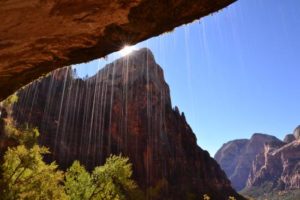
Lastly, here’s a nearby attraction few people know about – the ghost town of Grafton. Unlike most ghost towns, this was a farming settlement established by Mormon pioneers. Here, you’ll find a couple of intact buildings maintained by the LDS church. There’s a gate that’s unlocked during daylight hours. To get there, turn south on Bridge St. in the village of Rockville, cross the Virgin River, then turn right at the first intersection. Continue about two miles. The road is unpaved, but it’s easily driven in Old Betsy. Chances are, you’ll have the place to yourself.
Okay, that’s it for this post. Thanks for reading! Please join me January 15 as we head to Bryce Canyon National Park.
